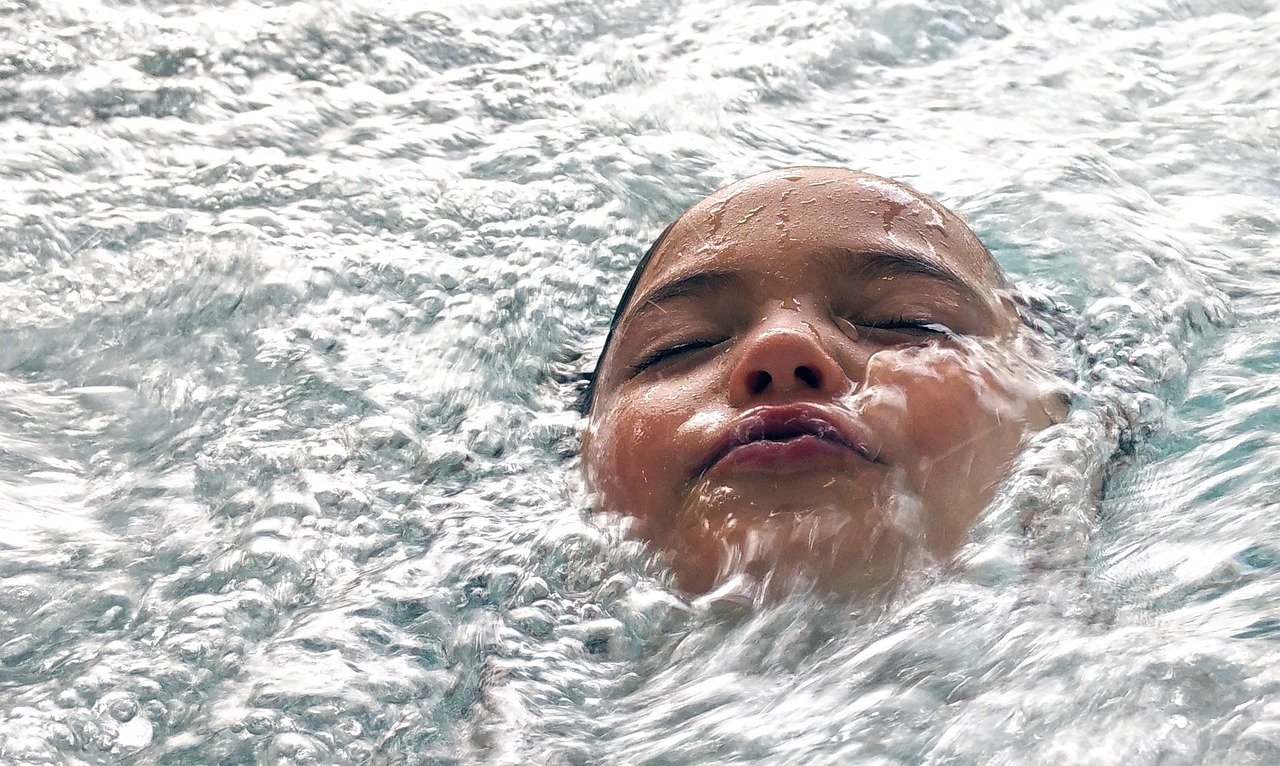 The drowning of a child is a tragic event, one that no family should have to experience. Every child is at risk of this type of accident. Knowledge and prevention are key in protecting your children from an accidental drowning.
The drowning of a child is a tragic event, one that no family should have to experience. Every child is at risk of this type of accident. Knowledge and prevention are key in protecting your children from an accidental drowning.
After birth defects, drowning is the leading cause of death for children ages 1 to 4. Drownings are not limited to summer pool parties - they can also strike families within their homes. In fact, most child drownings inside the home occur in bathtubs, and more than half of bathtub deaths involve children under 1 year of age.
While water and water play can be dangerous for young children, it is not completely avoidable nor should children be denied the joy of experiencing it. With that in mind, it’s important for families to know exactly how to monitor their little ones - at home, at the pool, and even during bath time.
Young Children & Water: A Dangerous Combination
As stated, drowning is particularly dangerous to children aged 1 to 4. However, it’s important to remember that drowning is not a swimming hazard specifically. In fact, 69% of all drownings among children age 4 and younger happen during non-swim times.
Experts know that young children can drown in as little as an inch or two of water. Drowning can also happen quickly and silently (i.e. with no screaming, thrashing, etc.). The reason for this is that young children lack the neck and muscle control that would otherwise let them float, call for help, and so on. If even a small amount of water covers their mouth and nose, they cannot breathe - and they cannot do anything about it.
Safety Guidelines: How Parents Can Protect Children From Drowning
The primary drowning risk for toddlers aged 1 - 4 is unanticipated, unsupervised access to water. However, there are a number of safety guidelines families can follow to protect children from a tragic drowning accident. We have categorized and listed those guidelines below, based on various settings and locations, for your reference:
- General Safety - Never, for any period of time, leave a child alone, or in the care of other children, in or near any water-filled area. Swimming pools, hot tubs, spas, bathtubs, and natural bodies of water should all be treated as a potentially hazardous environment. Parents should be within arm's length of their young children when they are near any of these bodies of water. Additionally, families must always be attentive in these situations - that means avoiding the distractions of cell phones or drinking alcohol. Never attempt to multi-task (i.e. do chores and monitor your child), and instead focus entirely on your children and their interactions with water. Finally, parents should always empty containers of water when they are not in use. This includes buckets, bathtubs, coolers, and wading pools.
- Private Pool Safety - If your family home has a pool, we recommend using 'layers' of protection at home, as recommended by the American Academy of Pediatrics. For example, research suggests that proper fencing can prevent more than half of all swimming pool drownings of young children. Additionally, pool alarms can alert families when a child falls into a family pool; gate and door alarms can be installed to alert families when a child opens them; and window guards can be placed on windows that face the pool. Together, these tools can safeguard your private pool and make it safer for all. If you attend a gathering at a house with a pool, whether it is a pool party or not, be acutely aware of whether these protections exist and keep an eye on your curious toddler! At a pool party, assign a “water watcher” to take turns keeping eyes on your child.
- Backyard Safety - If your children are under the age of 5, remove any landscaping features that gather water in your backyard or around your house. This includes birth baths, fountains, ponds, and so forth. Additionally, always cover trash and recycling cans to prevent the collection of water within them.
- General Bathroom Safety - When children are young, families should use safety latches or doorknob covers to keep all household bathrooms closed when they're not in use. Young children should never enter a bathroom alone, as it’s easy for them to fall into the toilet or the tub, as well as accidentally run scalding hot water on their skin.
- Bathtime Safety - Parents and guardians should prepare for bathtime by putting any cleaning supplies and towels you will need within easy reach; this way, you will be able to constantly supervise your child while they’re in the water. If you need to leave the bathroom for any reason, always bring your baby with you. Do this even if you are using a supportive infant tub or bath seat. Even infant bath seats can tip over and lead to accidental drowning in even a few inches of water.
- Public Pool Safety - Safety around the water doesn’t end when you leave home! If you go to a public pool, always get into the water with your young child during swim time. Remember that it is the parent’s job to watch young children at the pool, not the lifeguard’s. If for any reason you need to leave the water, that child should leave with you unless another trusted adult can supervise the child directly.
- Nature Safety - Should you visit a natural body of water, such as a lake or river, your child will need a properly fitted life jacket that is approved for use and safety by the US Coast Guard. Children and others who lack strong swim skills should also wear life jackets when at a pool or water park.
Water Safety Over Time
One of the best ways to help children be safer around the water is to help them learn how to swim. But deciding when to enroll children in lessons is a decision each family must make for their child individually. This decision should be based on factors such as how often a child may be around water; the child's emotional maturity, physical and developmental abilities and limitations; their interest in learning to swim; and how comfortable he or she is in the water.
Additionally, it’s important to note that recent studies suggest that water survival skills training can help reduce drowning risk for children between the ages of 1 to 4, depending on the child. If your child seems ready, this is a good time to introduce good water safety habits and start building swim readiness skills. Around the ages of 4 to 6, formal swim lessons will continue to help them enjoy the water safely.
Your pediatrician can help you decide if your toddler is ready for swim lessons, so feel free to bring up this subject during their exams! We highly recommend parents learn CPR - a truly lifesaving skill to have in the event of a water-based or other emergencies.
If you have additional questions about drowning and water-based accident prevention, please reach out to our offices. Our team and staff members at Capital Area Pediatrics can help to answer your questions and keep your family healthy and safe. Additionally, we are happy to provide an opinion on whether or not it’s time for your child to learn how to swim! To schedule an appointment for a full exam and to discuss your questions and thoughts with one of our pediatricians, find your nearest location and give our staff a call today.


